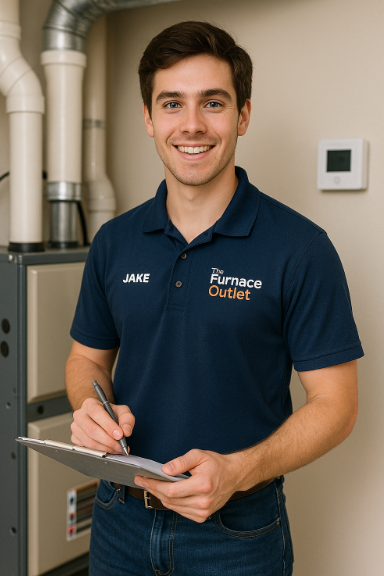Hey folks, Jake Lawson here. If you’re looking into hose AC units, portable AC unit tubes, or different portable air conditioner tube types, you’ve probably noticed how many options are out there. These systems can make a huge difference in cooling efficiency, portability, and convenience for homes, apartments, or offices.
In this guide, we’ll cover how these portable AC units work, the types of tubes used, installation tips, maintenance advice, and practical considerations for choosing the best system for your needs. Plus, we’ll discuss how pairing a portable solution with a permanent central system like the Goodman 3-Ton 14.5 SEER2 R32 Bundle can create optimal home comfort.
How Hose AC Units Work
A hose AC, often referred to as a ducted portable air conditioner, works by drawing warm indoor air into the unit, cooling it with refrigerant, and then venting heat through a tube (or hose) to the outside. Here’s a quick breakdown:
-
Air Intake – Warm air is pulled from the room into the AC unit.
-
Cooling Process – Air passes over refrigerant coils to lower the temperature.
-
Exhaust Tube – Heat and moisture are expelled through a flexible tube to the outside.
-
Distribution – Cooled air is recirculated back into the room via the fan.
This setup allows for portable cooling without requiring permanent installation or complex ductwork.
For a more detailed explanation of portable AC mechanics, check out Thermospace – Portable Air Conditioner FAQ.
Common Types of Portable AC Tubes
There are several types of portable air conditioner tube types to consider:
1. Flexible Aluminum Tubes
-
Lightweight and easy to bend.
-
Often included with standard portable units.
-
May be prone to kinking if bent sharply.
2. Insulated Tubes
-
Prevents heat loss and condensation buildup.
-
Recommended for units operating in warm or humid climates.
-
Reduces noise slightly compared to non-insulated tubes.
3. Rigid or Semi-Rigid Tubes
-
Durable and maintains its shape.
-
Ideal for longer runs or when the hose must remain extended for long periods.
-
Less flexible but provides consistent airflow.
4. Dual Hose Systems
-
One hose pulls in outdoor air, the other exhausts hot air.
-
More efficient than single-hose designs because they maintain balanced air pressure.
-
Reduces the chance of pulling warm air from other parts of the home.
Benefits of Hose AC Units
Using a portable AC unit with tube provides several advantages over traditional systems:
-
Portability – Move the unit from room to room as needed.
-
Ease of Installation – Most units slide into a window or vent with minimal tools.
-
Energy Efficiency – Uses less electricity than permanent AC systems for cooling single rooms.
-
Targeted Cooling – Perfect for bedrooms, offices, or small living spaces.
For more insights on energy-efficient cooling, check out Energy Star – Room Air Conditioners.
Installing Your Portable AC Unit Tube
Proper installation of your hose AC unit is critical to performance:
1. Measure Your Space
Ensure the unit fits the window or vent opening and that the tube can be routed outside.
2. Attach the Hose Securely
Follow manufacturer instructions to connect the hose without kinks or leaks.
3. Seal the Window or Vent
Prevent warm air from entering by sealing gaps with foam or weatherstripping.
4. Test the Unit
Power on the AC and adjust fan speeds for optimal cooling.
For step-by-step guidance, see Consumer Reports – Portable Air Conditioners.
Maintenance Tips for Hose AC Units
Keeping your portable AC running efficiently requires regular maintenance:
-
Clean the Air Filter – Remove dust and debris to maintain airflow and cooling efficiency.
-
Check the Hose – Ensure it’s free from obstructions or kinks.
-
Inspect Window Seals – Prevent energy loss.
-
Drain Condensation – Empty water trays if your unit collects condensation.
Routine maintenance prolongs the life of your portable AC and ensures consistent cooling performance.
When to Choose a Hose AC Unit
These units are ideal if you:
-
Rent a home or apartment and cannot install central AC.
-
Need supplemental cooling for hot rooms or offices.
-
Desire portability and easy relocation.
-
Want a cost-effective, energy-efficient cooling solution.
Combining a portable hose AC with a reliable central system like the Goodman 3-Ton 14.5 SEER2 R32 Bundle ensures whole-home comfort while giving you flexibility in individual spaces.
Pros and Cons of Portable AC Units with Tubes
Pros:
-
Easy installation
-
Portable and flexible
-
Efficient for single-room cooling
-
Lower upfront cost than full central systems
Cons:
-
Limited cooling capacity for larger spaces
-
Can be noisy, depending on the model
-
Requires proper venting setup
-
Condensation management may be necessary
For additional insights, see Energy.gov – Air Conditioning Tips.
Conclusion
A hose AC or portable AC unit with tube offers a flexible, energy-efficient, and cost-effective way to cool individual rooms. With multiple tube types available—including single hose, dual hose, flexible, and insulated options—you can choose the solution that fits your space and cooling needs.
Pairing a portable unit with a permanent system like the Goodman 3-Ton 14.5 SEER2 R32 Bundle ensures both targeted and whole-home comfort, delivering reliable cooling for any situation.







